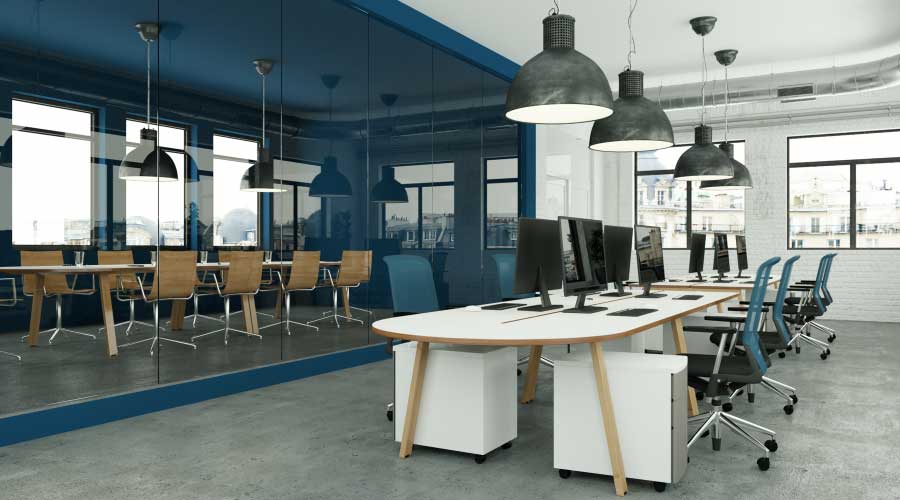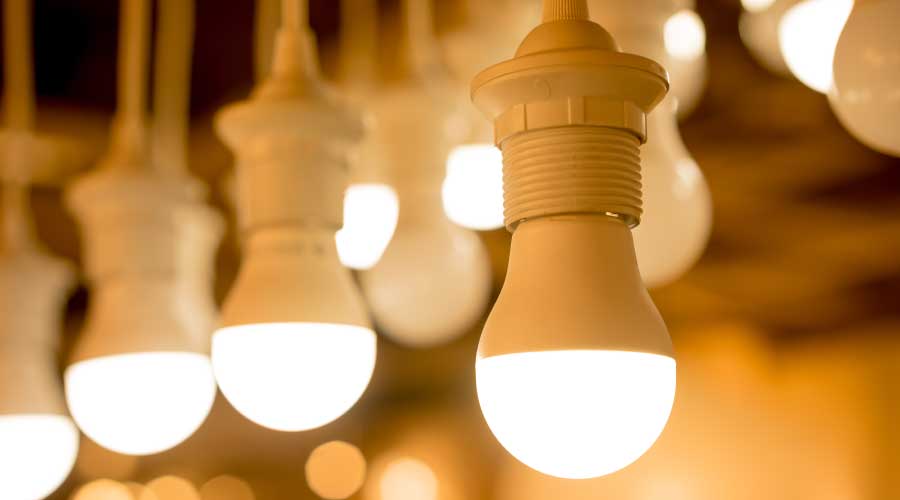Advances In Lighting Technology Give Facility Managers New Options For Savings
For facility managers who have taken basic steps to reduce lighting system energy costs, the ability to wring savings out of lighting systems doesn't end there.
Advances in technology continue to provide additional opportunities for savings. In fact, the average commercial facility could stand to do more than just basic upgrades to its outmoded lighting systems. Options run the gamut — including fixture replacement, daylighting, dimming, advanced control and ballast strategies.
"[A facility manager's] best bet is to explore the different energy management strategies that are available," says John J. Brelus, General Electric's global product general manager — fluorescent systems.
For example, changing out actual fixtures can bring more savings than merely changing to a more efficient lamp. New fixtures can help improve both quality lighting and efficiency.
Case in point: In a recent U.S. Department of Energy study, the highest performing LED troffers were found to be up to 44 percent more efficient than their fluorescent counterparts, says Scott Roos, vice president of product design at Juno Lighting Group.
"When selecting an LED fixture, it is critical to compare the actual performance of the luminaire, not just the rated lumens of the lamp or fixture, as LED (luminaires) generally will yield superior results," he says. "For example, an LED downlight can be twice as efficient in extracting the available lamp lumens out of a round hole as compared to traditional CFL technology. And they can be more efficient in placing the lumens where they are needed, allowing an LED fixture of substantially less lumens to do the same or better job as compared with conventional technology."
Roos says that LED technology and fixtures also compare favorably to fixtures featuring pulse start metal halide lighting. He says that his company continues to manufacture conventional light sources and is equally happy to sell a metal halide or LED fixture. "But in applications ranging from outdoor area lighting and wall packs to recessed downlighting," he says, "well-designed LED luminaires simply are more effective at distributing the lumens to useful zones with greater uniformity, with less wasted light, than metal halide luminaires."
Solid-state lighting remains an emerging technology, albeit one that is increasingly viable. But facility managers should not forget about traditional lamp/fixture options. One example is replacing metal halide with a high-output fluorescent solution, says Silvie Casanova, lighting communications manager, Philips Lighting North America.
"Although (high-output fluorescent) is often associated with higher costs because it is a completely different fixture, there are many benefits of this kind of fluorescent, such as longer life, comparable, if not better, light quality, and energy savings to be had for switching," she says.
Advanced Ballast Strategies
For many facilities, the move to more energy-efficient T8 lamps and new electronic ballasts may now be the next step in making lighting even more energy efficient.
"An extensive selection of high-efficiency, instant- and program-start ballasts are available," GE's Brelus says. "These ballasts are suitable for use with low wattage F28T8 and F32/25T8 lamps. They incorporate anti-striation control and arc guard protection. Light output and wattage consumption also can be tuned by using ballasts with a lower ballast factor, combined with low wattage lamps."
As Cheryl Ford, marketing manager for OSRAM SYLVANIA, notes, "High-efficiency ballasts are the best choice to maximize energy savings. For T8 fixtures, a high-efficiency ballast will save between two and four watts per fixture. They're a no-brainer."
Rob Freitag, vice president, marketing, EYE Lighting International, agrees, noting that improvements to electronic fluorescent ballast systems, combined with advances in electronic ballasts for HID lamps, make choosing an "e-ballast" system a logical one — both in energy savings and lighting system control.
"These systems are quite reliable and are now available in a wide variety of wattages to ensure a proper wattage is available to upgrade virtually any lighting system," Freitag says. "Some electronic ballasts offer interesting controls options for dimming and daylight harvesting."
Related Topics:














